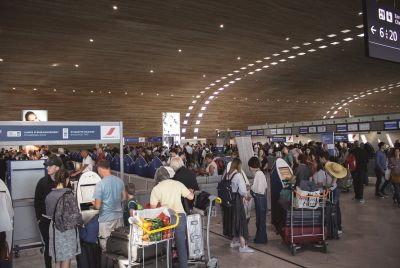Wendy's upcoming £15.8M digital menu will change food prices during different times of the day
This bold move by Wendy's follows in the footsteps of ride-sharing apps like Uber, which employ surge pricing during peak demand to balance supply and demand.

Fast-food giant Wendy's is set to unveil an innovative "Uber surge-style" menu, transforming the traditional dining experience by introducing dynamic pricing.
Wendy's upcoming system, set to undergo testing in 2025, will leverage "digital menu boards," with a substantial £15.8M ($20 million) investment, as revealed by CEO Kirk Tanner.
This approach will enable real-time price updates at minimal or no additional cost.
As anticipation builds, consumers are eager to discover when they can snag the best deals or when it might be a costly affair to satisfy their fast-food cravings.
This bold move by Wendy's follows in the footsteps of ride-sharing apps like Uber, which employ surge pricing during peak demand to balance supply and demand.
The concept of dynamic pricing in the fast-food industry, however, marks a paradigm shift, leaving consumers intrigued about the potential implications for their wallets.
Wendy's, known for its square-shaped burgers and signature Frosty shakes, is no stranger to innovation.
The introduction of the "Uber surge-style" menu is poised to redefine the dynamics of fast-food pricing.
The menu's real-time adjustments aim to optimize efficiency, reduce wait times and create a responsive pricing model tailored to customer demand.
The new system aims to answer the question on everyone's minds: when will be the cheapest and costliest times to indulge in Wendy's delights?
The answer lies in the algorithms that govern the dynamic pricing model, which Wendy's plans to implement across its menu offerings.
While the company has not disclosed the intricacies of the algorithm. It is expected to consider factors such as meal popularity, time of day and overall demand at a particular location.
This adaptive approach ensures that prices align with consumer behaviour and market conditions, making the "Uber surge-style" menu a dynamic and responsive system.
For budget-conscious customers, this introduces a new dimension of strategic dining.
While lunchtime rushes or popular meal options might see prices spike, opportune moments during lulls in demand could offer significant savings.
The unpredictability adds an element of gamification to the dining experience, encouraging customers to time their visits for maximum value.
Industry experts speculate that this dynamic pricing strategy could potentially revolutionize the fast-food landscape.
It encourages flexibility in consumer behaviour and promotes more efficient use of resources for the restaurant chain.
Wendy's hopes to strike a balance that benefits both its bottom line and customer satisfaction.
The "Uber surge-style" menu is not just a pricing experiment; it is part of a broader trend in the fast-food industry towards embracing technology and data-driven approaches.
The integration of digital solutions, mobile apps and data analytics has become increasingly prevalent as chains seek to enhance customer experiences and streamline operations.
Wendy's move also reflects a response to changing consumer expectations.
In an era of instant gratification and convenience, dynamic pricing aligns with the desire for personalized, on-demand services.
The success of similar pricing models in other industries, such as transportation and hospitality, has paved the way for fast-food chains to explore new avenues.
Wendy's daring move would position it as the first fast-food chain to incorporate dynamic pricing for meals.
The potential benefits include an upswing in sales and the prospect of enhancing profit margins.
However, there is a corresponding risk of alienating customers accustomed to a fixed meal price regardless of the time of their visit.
Steven Suranovic, an associate professor of economics at George Washington University, cautioned, "They could shoot themselves in the foot by introducing something customers aren't ready for."
He emphasized that if customers perceive dynamic pricing as price gouging, it may not be well-received.
According to a survey conducted by software company Capterra last year, 52 per cent of over 900 consumers considered dynamic pricing in restaurants as price gouging.
Wendy's CEO Kirk Tanner, outlined his plans earlier this month. He stated: "Beginning as early as 2025, we will begin testing more enhanced features like dynamic pricing and day part offerings along with AI-enabled menu changes and suggestive selling."
© Copyright IBTimes 2025. All rights reserved.





















